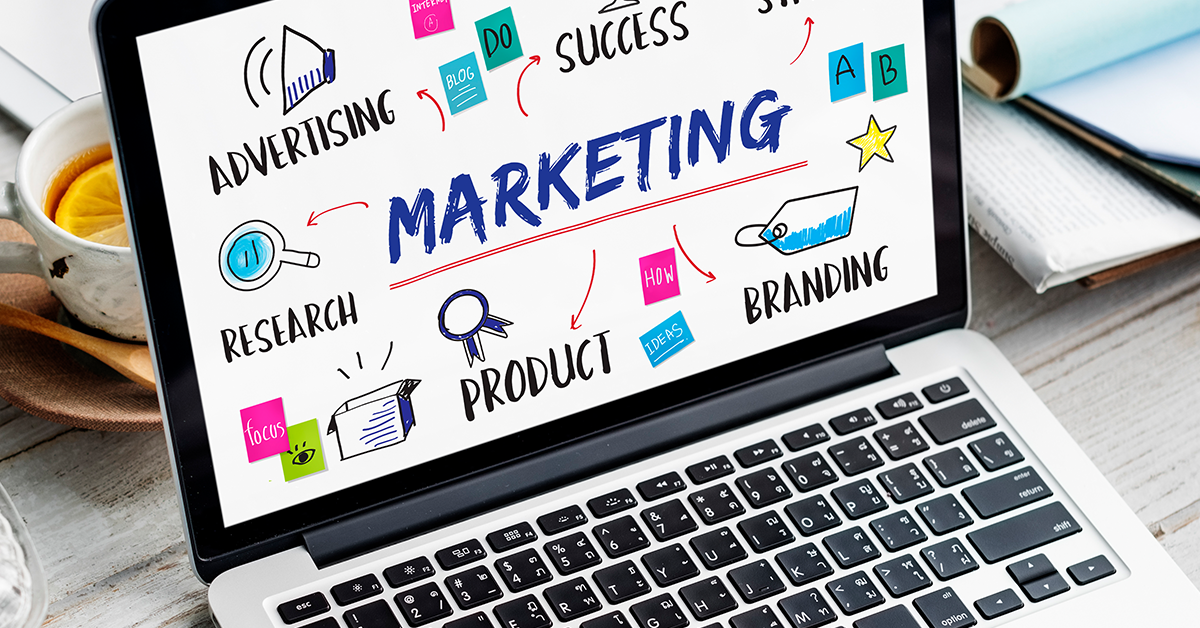2020 is a year probably no one would want to relive ever again. The pandemic shifted our lives in ways none of us ever fathomed. And even though it's been two years since that, our lives are never returning to where it was in 2020 ever again. Businesses and global economies are still in the process of navigating through the changes that are a product of this new way of living.
And the marketing sector is no exception. In fact, the marketing sector has undergone a 360 degrees shift in more ways than one. Resultantly, marketers are trying hard to transition into this new world with innovative business strategies.
This subject has been the talk of the town across global marketing summits and post-COVID marketing conferences in the US, such as the Marketing 2.0 Conference.
Let us dive a little deeper and understand the marketing scenario post-pandemic and what to expect.
Post vs Pre: What Are The Differences?
The marketing scenario post-pandemic was a whole other situation than what it is now. Before the pandemic, marketing strategies were built to bring in more customers. The scenario is different now. Marketing strategies are now more research-driven, focusing on more than just sales.
Data shows that 44% of B2B marketers have entirely changed their marketing mix since the pandemic began to meet new challenges and changes. Post-COVID marketing conferences in the USA and global marketing summits have presented the following differences in the marketing behavior pre and post-pandemic-
- Shift From Emphasis On Customer To Emphasis On Customer Segment:
Expert and leader opinions at top marketing conferences in the USA attest to a shift in marketers' perspective. Pre-COVID-19 behavior showed a heavy reliance on zooming in on the customers and what they want. But now marketers have broadened their vision, focusing more on the customer segment as a whole. This allows us to have a better perspective and insight into media strategies and creative marketing approaches.
- Competitors Are No Longer The Competition
Before COVID-19, the emphasis was on beating the competitors at any cost. But now, the situation has changed. Now the competition is the last best experience a customer has. Because after the pandemic, digitization has taken a whole new direction. This has led to customer expectations shooting up to new levels. The reason behind this is the mass amount of personal data available to the companies. This prompts customers to expect better and more personalized services.
- Emphasis On Customer Relationships
Customers have always been an integral part of the business. And building lasting relationships with the customer is an essential marketing strategy every business aims to follow. However, since COVID-19, it has become even more crucial than before. And especially in the case of B2B sales. Because as the pandemic made us shift towards a virtual sales environment, trust and integrity became essential factors.
- Emphasis On Brand Value
Before COVID-19, brands usually opted to stand or rather hide behind great, attractive products. However, experts and leaders across marketing conferences in the USA and worldwide suggest that this mindset has shifted. Because the pandemic did challenge brand loyalty quite a bit. And brand loyalty is something every brand strives for. EY Future Consumer Index found that up to 61% of consumers, depending on the category, became willing to consider a white-label product, let alone switch name brands.
To rectify situations like this, brands are now shifting focus towards creating more brand value that could help them connect with customers on a deeper level.

Consumer Behavior In The Post COVID-19 World
The pandemic undoubtedly brought a shift in the behavior of marketers, but did it make any difference in consumer behavior? The answer is yes because marketing trends go hand in hand with consumer behavior. Experts at global marketing summits consider the change in consumer behavior to be an integral factor leading to the shift in marketing behavior. Let us explore how this has changed in the post-COVID-19 scenario.
- A Shift To Online Payment
Online payment prevailed before the pandemic. But as COVID hit and any physical contact became a matter of avoidance, online payment witnessed a humongous surge.
In response, marketers have steadily shifted to making online payments a priority.
- Shift In Spending Behavior-
The pandemic affected our wallets quite a bit. No matter how financially stable we were, COVID-19 shook our foundation quite a bit. This led to a massive shift in the spending behavior of the consumer. After the pandemic, consumer spending has transcended more towards necessities than luxuries.
This shift has prompted marketers to rethink their pricing policies and what they can offer to their potential customer base.
- Change In Customer Expectations
Experts across marketing conferences and seminars in the USA and worldwide, such as the Marketing 2.0 Conference, point out the apparent change in customer expectations post COVID-19. We have now moved into the era of instant gratification thanks to technology. As a result, consumers today expect that any experience will be frictionless, anticipatory, relevant, and connected.
Another reason is the shift towards personalized experiences. With businesses having easy access to our personal data, customers now expect more customized services.
- A Shift Towards E-Commerce
Like online payment, another trend that witnessed a considerable shift is e-commerce. Analysts predict US e-commerce sales to increase from 23% of retail sales to 31% by 2026. Moreover, online shopping shows no sign of slowing down even after the pandemic. In fact, it is expected to account for 22% of global retail sales by 2023.
It can be safely said that E-commerce is no longer an alternative to personal shopping, but it is the new norm and the future.
Post COVID-19 Marketing Strategies That Marketers Need!
The pandemic brought about a significant shift in consumer behavior. And this shift has prompted us to rethink the old strategies and behavior to a great extent. So then, what can we expect moving forward? How can marketers meet these changes and stay at the top of their games? Critical points from professionals and top marketing conferences in the USA and worldwide suggests the following:
- Emphasis On Brand Value-
After COVID-19, brand loyalty is an old story. Almost fifty percent of consumers have swiftly shifted to new products and brands. Since brand loyalty is such an integral part of your business foundation, marketers need to be quick. Old promotional strategies and shiny product advertisements won't do the job anymore. Hence, shifting the emphasis toward brand value is a must. Because now, it's all about connecting to your customers at a deeper level. Therefore, brand value will be an integral marketing strategy in the post-COVID-19 era.
- Digitization-
Digitization is another trend that is now set to be a part of marketing strategy in the post-pandemic era. From shopping to payments, going digital is the new mantra. Hence, marketers, too, need to shift their focus towards amalgamating that into their marketing strategies. Hence, an omnichannel marketing strategy is needed for survival and growth.
- Tapping Into The Potential Of Digital Marketing-
Traditional marketing techniques are almost redundant in this digital era. The focus has now exponentially shifted to digital marketing and its immense potential. SEO, predictive analysis, influencer marketing, etc, are what the post-COVID-19 marketing strategy is all about.
- Revolutionized Promotional Strategies-
With a shift in marketing strategies, a shift in promotional strategy is needed. With digital marketing dominating significantly, the post-COVID-19 promotional tools are highly sophisticated and tech-driven. Incorporating AI, short-form videos, and influencer marketing are examples of how promotional strategies have shifted in the post-pandemic era.
- Retaining Existing Customers-
Getting new customers after the pandemic can be tough. So one of the post-pandemic strategies is to retain the existing customers you got. Since brand loyalty is already eroding, holding down loyal customers should be a priority. A great example is marketing guru Neil Patel. He offered his premium UberSuggest features along with the free version to his customers, resulting in an outpouring of gratitude from the business industry and increased website traffic.
- Customer Experience Is Everything-
With this sudden shift came a surge of competition in the market. And in the post-COVID-19 era, using fancy promotional tools won't take you a long way. The key lies in customer experience and how to enrich it. Customer expectations have now shifted drastically, with a low tolerance for anything less than what they expect. Hence, marketers need to step up their game, and personalization could be the key to that—the more personalized your services, the better chance at attracting and retaining customers.
In Essence
Change is the only constant, and COVID-19 proved that in more ways than one. The post-COVID-19 era, in contrast to the pre-COVID-19 age, is much more fierce, competitive, and technology-driven. Navigating through these changes can seem like a complex and daunting experience, but also inevitable. The key lies in understanding these trends and making informed decisions.
At Marketing 2.0 Conference, marketing experts and leaders from across the globe will give key insights into this subject and how to shift, revolutionize and flow with the changes. Because as Albert Einstein said, "The measure of intelligence is the ability to change."




